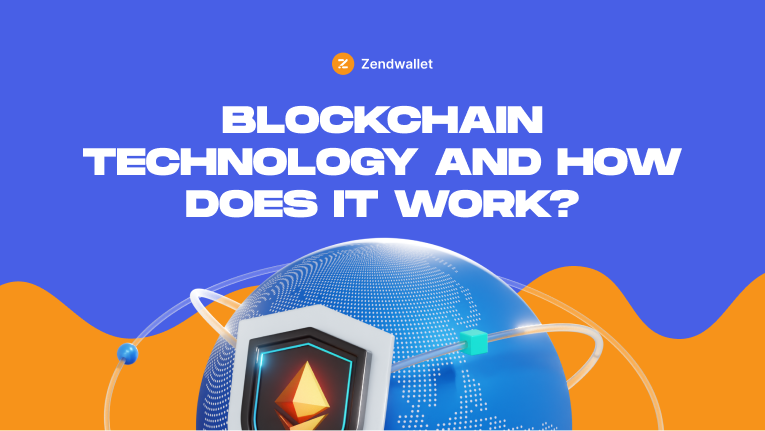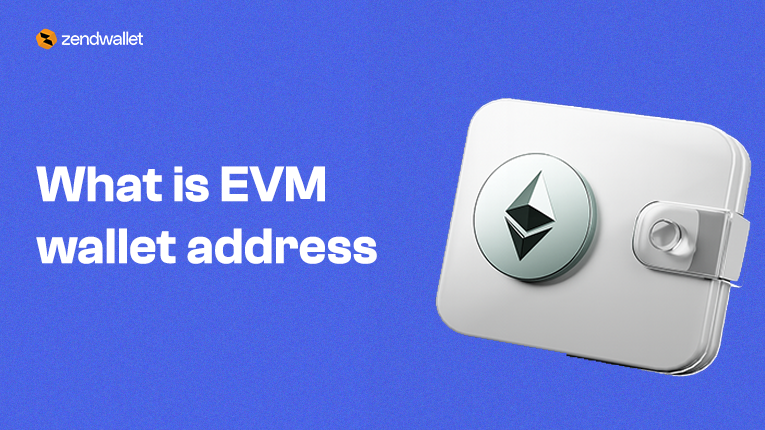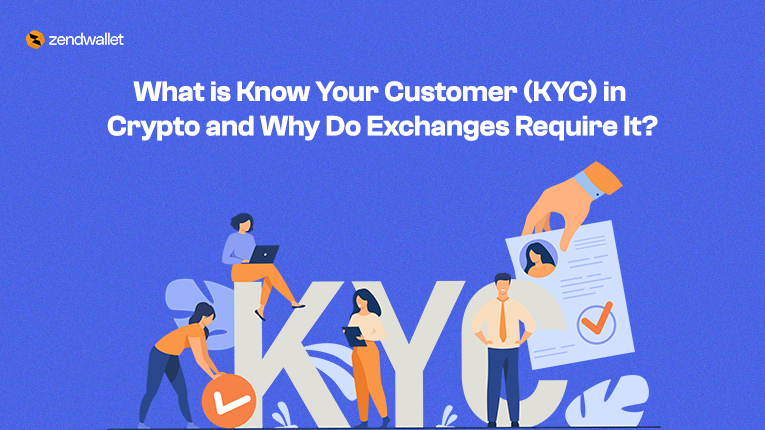The process of creating a shared, immutable distributed ledger technology (D.L.T.) for blockchain technology securely logs transactions and tracks assets inside a network, whether those assets are nonphysical (like copyrights) or actual (like money or real estate).
For Instance, You can send money directly to someone without needing a bank, in seconds instead of days, and without paying high fees. Storing your money in an online wallet not tied to a bank means you have complete control over your cash.
You don’t need a bank’s permission to access or move it; you don’t have to worry about anyone taking it away or economic policies affecting it.
This is not a futuristic concept; it’s happening right now. These are just a few ways blockchain technology changes how we trust and exchange value. There are many more uses we’ll discuss later.
For many people, blockchain technology still needs to be clarified or more intimidating. Some are skeptical about its future use. This skepticism is understandable because we are still in the early stages of blockchain’s development and widespread adoption.
2021 is to blockchain, which the late 1990s were to the internet. Like the internet, blockchain technology is not a fad; it’s here to stay. If you’re reading this, you’re also early in exploring this technology.
This guide simplifies blockchain technology. Think of it as your ‘Blockchain 101’. We’ll cover everything from what blockchain is and why it matters to how it works (step by step) and the most promising applications for today and tomorrow.
By the end of this guide, you’ll feel confident about blockchain and be able to make informed decisions and discuss blockchain knowledgeably with friends and family.
Blockchain Basics: What You Need to Know
Blockchain technology serves as the fundamental infrastructure of the blockchain, powering the functionalities of digital currencies such as Bitcoin, much akin to how the internet facilitates email communication.
At its essence, a blockchain constitutes an immutable digital ledger, meticulously recording transactions across a distributed network of computers. This distributed nature ensures transparency and security, verifying and storing each transaction in multiple locations.
Blockchain Benefits & Use Cases
The potential of blockchain extends far beyond digital currencies, offering many benefits across diverse industries. Market projections indicate substantial growth, with revenues forecasted to surpass $39 billion by 2025.
Common Blockchain Use Cases:
1. Cryptocurrencies: Digital currencies like Bitcoin provide alternative forms of monetary exchange, offering decentralization and security.
2. Decentralized Finance (DeFi): DeFi platforms facilitate financial services such as lending and borrowing without traditional intermediaries, offering greater accessibility and efficiency.
3. Supply Chain Management: Blockchain enhances supply chain processes by enabling transparent and traceable product tracking, improving efficiency and accountability.
4. Digital Identity: Blockchain technology enables the secure management of digital identities, mitigating the risk of identity theft and fraud through robust encryption and verification mechanisms.
What is Blockchain? Beginner’s Guide For 2024
Blockchain is a revolutionary technology that enables secure and transparent transactions without the need for intermediaries like banks. Fundamentally, a blockchain is a digital ledger that tracks transactions on several computers to prevent data from being changed after the fact. Because of this, the system is highly reliable and safe.
Each transaction on a blockchain is recorded in a “block” linked to the previous block, forming a chain of transactions. This chain is maintained by a network of computers (nodes) that validate and record new transactions through a consensus mechanism, ensuring that all copies of the ledger are identical.
Two key features of blockchain are that it’s immutable and distributed. Immutability means the records can’t be changed, ensuring accuracy. Being distributed protects the blockchain from attacks.
Each transaction or record is stored in a “block.” For example, blocks on the Bitcoin blockchain include over 500 Bitcoin transactions on average.
Blocks are linked to each other, forming a chain of transactions. This is why it’s called a blockchain.
Types of Blockchains
1. Public Blockchains: Open networks anyone can join, like Bitcoin and Ethereum. Transactions are validated by participants (miners) who get rewards.
2. Private Blockchains: Restricted networks where access is limited, often managed by one entity. Examples include Hyperledger.
3. Hybrid Blockchains or Consortiums: Combine features of public and private blockchains. Examples are Energy Web Foundation and R3.
4. Sidechains: Parallel blockchains connected to the main blockchain. They improve scalability and efficiency. An example is the Liquid Network.
History of Blockchain Technology
Blockchain technology has a rich history dating back several decades. Although the idea of a decentralized digital ledger was first put forth in the early 1980s, blockchain technology only became well-known with the rise of Bitcoin in 2009.
– 1980s: The idea of a cryptographically secured chain of blocks, or blockchain, was first proposed by cryptographer David Chaum in 1982. His work laid the foundation for the development of digital currencies.
– 1991: Stuart Haber and W. Scott Stornetta introduced a method for timestamping digital documents to prevent tampering. This work contributed to the concept of a blockchain.
– 2008: The pseudonymous figure known as Satoshi Nakamoto published a whitepaper titled “Bitcoin: A Peer-to-Peer Electronic Cash System.” This paper outlined the design of Bitcoin, the first decentralized cryptocurrency, and introduced the blockchain as its underlying technology.
– 2009: The Bitcoin network officially launched, marking the beginning of the era of blockchain technology. Bitcoin allows users to transact directly with one another without the need for intermediaries like banks, using a decentralized ledger to record transactions.
– 2013: Vitalik Buterin proposed Ethereum, a blockchain platform with a built-in programming language that enabled developers to create smart contracts and decentralized applications (DApps). Ethereum introduced new possibilities for blockchain beyond currency transactions.
– 2017: The rapid rise in the value of Bitcoin and other cryptocurrencies led to a surge of interest in blockchain technology. Numerous companies and industries began exploring blockchain’s potential for applications beyond finance, such as supply chain management, healthcare, and identity verification.
– Present: Blockchain technology continues to evolve, and new applications are being found across various sectors. While scalability and regulatory concerns remain, the potential for blockchain to revolutionize industries and reshape the global economy is increasingly recognized.
Who Invented Blockchain?
The blockchain concept was initially proposed by David Chaum in 1982 and further developed by Stuart Haber and W. Scott Stornetta in 1991.
However, Satoshi Nakamoto invented and implemented the first blockchain network with Bitcoin in 2009.
Nakamoto’s groundbreaking work introduced the world to the practical application of blockchain technology, revolutionizing how we perceive and utilize decentralized digital ledgers.
Who Owns Blockchain Technology?
Any single entity does not own blockchain technology; it operates on a decentralized basis, much like the internet. Therefore, no individual or organization can claim ownership of blockchain technology.
Like the internet, anyone can utilize blockchain technology to create and manage their blockchains for various purposes.
Who Founded Bitcoin?
Bitcoin was founded by an individual or group known as Satoshi Nakamoto. Nakamoto’s identity remains unknown to this day.
The first Bitcoin transaction took place when Satoshi Nakamoto sent ten bitcoins to Hal Finney, a well-known developer who contributed to the early development of Bitcoin. This transaction demonstrated the practical application of Bitcoin as a digital currency and occurred shortly after the creation of the Bitcoin network.
The Power of Blockchain Technology
Blockchain technology makes data private, permanent, and verifiable. While the record of data and transactions is public, encryption protects it from unauthorized access and alteration. This is why the Bitcoin blockchain is often referred to as Bitcoin’s “open ledger.”
However, the security and transparency of blockchain come at a cost. The processes involved, such as hashing and encryption, require substantial computing resources, which makes the system relatively slow. For instance, the Bitcoin blockchain network is limited to processing 4.6 transactions per second (T.P.S.).
In contrast, credit card companies routinely process an average of 1,700 TPS and claim they can handle up to 56,000 TPS. This 4.6 TPS limit is a significant aspect of Bitcoin’s scalability problem, and computer scientists are actively working on solutions to enhance its efficiency.
The network of computers validating Bitcoin transactions consumes a considerable amount of electrical power, reportedly more than the entire country of Switzerland.
Many of Bitcoin’s transaction-validating nodes hold the blockchain as a whole, which is currently about 250 GB of data. These are known as full nodes. The network also includes SPV (Simplified Payment Verification) nodes, which do not store the entire blockchain but validate transactions.
Estimating the number of nodes in the Bitcoin network is challenging. A website called Bitnodes provides an updated count of online and reachable nodes, but estimates from experts range widely from 6,000 to 200,000 nodes.
The exact number remains uncertain, highlighting blockchain technology’s decentralized and distributed nature.
How Does a Public Blockchain Work?
Imagine a ledger used to store information, like property records or company transactions. Traditional ledgers can be tampered with, making them less trustworthy.
Public blockchains solve this problem with triple-entry bookkeeping: transactions are cryptographically sealed and verified by a network of computers. This makes records tamper-proof.
For example, transactions are bundled into a block in the Bitcoin blockchain. Computers (nodes) validate the block by solving a complex problem. Once validated, the block is added to the chain, and the miner gets rewarded. This process makes the blockchain secure and trustworthy.
Proof of Work (PoW) vs. Proof of Stake (PoS)
These are two methods for validating transactions:
– PoW (Proof of Work): Used by Bitcoin. Miners solve mathematical problems to validate transactions but use much energy and process fewer transactions.
– PoS (Proof of Stake): Used by some other blockchains. Validators are chosen based on how many coins they hold (their stake). It’s more energy-efficient and faster.
The Future of Blockchain
So, what’s ahead for blockchain? Well, it’s looking pretty exciting! Think beyond just cryptocurrencies like Bitcoin. Blockchain can shake up healthcare, law, real estate, and entertainment industries. Imagine more cool ways it can transform our lives as technology keeps moving forward.
In simple terms, blockchain technology is changing how we do digital transactions. Getting the basics and seeing how it’s used across different areas helps us see how big this can get. Whether you’re into investing, tech, or just curious, now’s a great time to dive into the blockchain world. It’s like unlocking a whole new universe of possibilities!
How to Invest in Blockchain Technology
With blockchain showing some exciting potential and big companies like Amazon and Tesla getting on board, you might be curious about investing in it. But, like any investment, there are risks to consider. It’s a new technology, and not all projects will succeed. So, only invest what you can afford to lose, do your own research, and decide how much you want to invest.
Here are some simple ways you can invest in blockchain, depending on your goals and how much risk you’re comfortable with:
1. Buy Shares in Blockchain Companies: Invest in blockchain technology companies like Visa or Walmart. You can buy shares through online brokers like Vanguard or Betterment.
2. Invest in Companies with Bitcoin on Their Balance Sheet: Some companies, like Square and Tesla, hold Bitcoin as part of their assets. You can also buy shares in these companies through online brokers.
3. Buy Cryptocurrencies Directly: You can buy cryptocurrencies like Bitcoin or Ethereum on centralized or decentralized exchanges. Centralized exchanges are like traditional stock exchanges, while decentralized exchanges are peer-to-peer. Examples include Binance, Coinbase, and Uniswap.
4. Invest in Crypto Exchange-Traded Funds (ETFs): ETFs track the price of cryptocurrencies, which can be bought and sold on exchanges. Companies like Grayscale and Galaxy Digital offer crypto ETFs.
5. Invest in Crypto Mining Companies: Some companies, like Riot and Marathon, are involved in cryptocurrency mining. You can invest in them through online brokers.
6. Start Crypto Mining: You can buy crypto mining hardware and mine cryptocurrencies yourself. While Bitcoin mining requires a significant investment, there are other tokens you can mine with less capital, like Helium.
7. Join Mining Pools: Another option is to join a mining pool, where you combine your computing power with others to mine cryptocurrencies. Popular mining pools include the Slush Pool.
Investing in blockchain can be exciting, but it’s essential to research and only invest what you can afford to lose.
What is the Difference Between Cryptocurrency and Blockchain?
Cryptocurrency and blockchain are often used interchangeably, but they refer to different things:
– Blockchain:
Blockchain is the underlying technology that enables the secure, transparent, and decentralized recording of transactions. It can be used for various applications beyond cryptocurrencies, such as supply chain management, voting systems, etc.
– Cryptocurrency: Cryptocurrencies are digital or virtual currencies that use blockchain technology to secure and verify transactions. Bitcoin and Ethereum are examples of cryptocurrencies. They are specific applications of blockchain technology designed for digital payments and financial transactions.
Who Invented Blockchain?
Blockchain technology was conceptualized by an individual or group using the pseudonym Satoshi Nakamoto. Nakamoto introduced blockchain as the underlying technology for Bitcoin in a whitepaper titled “Bitcoin: A Peer-to-Peer Electronic Cash System,” published in 2008. The true identity of Satoshi Nakamoto remains unknown.
What Are the Benefits of Blockchains Over Traditional Finance?
Blockchain technology offers several advantages over traditional finance:
1. Decentralization:
Blockchain operates on a decentralized network of nodes, reducing the need for central authorities and intermediaries. This can lower costs and increase transaction speed.
2. Transparency:
All transactions on a blockchain are recorded on a public ledger, making them transparent and easily verifiable. This enhances trust among users.
3. Security:
Blockchain uses advanced cryptographic techniques to secure data, making it highly resistant to fraud and cyberattacks. Once a transaction is recorded, it cannot be altered or deleted.
4. Efficiency:
Blockchain can streamline processes by automating and reducing the need for manual intervention. Smart contracts, for example, can automatically execute and enforce contract terms, reducing administrative overhead.
5. Financial Inclusion:
Blockchain can provide financial services to unbanked and underbanked populations by enabling peer-to-peer transactions without needing a traditional bank account.
By understanding these aspects of blockchain technology, its potential applications, and the investment opportunities it presents, you can confidently navigate the evolving landscape of digital finance and innovation.
How can Businesses Benefit From Blockchain Technology?
Businesses can benefit from blockchain technology in several ways:
1. Building Trust: Blockchain enables businesses to establish trust among entities that have never worked together. Providing a transparent and immutable record of transactions eliminates the need for a trusted third party, fostering collaboration and cooperation.
2. Consortium Formation: Blockchain facilitates the creation of consortia, allowing multiple businesses to interact and share information without a central authority. This decentralized structure enables effective collaboration while preserving the autonomy of each member.
3. Enhanced Security: The immutable nature of data stored on the blockchain provides robust security against tampering and fraud. This ensures the integrity and authenticity of business records, reducing the risk of malicious attacks or unauthorized alterations.
4. Cost Reduction: By eliminating the need for intermediaries, blockchain technology reduces operational costs for businesses. Organizations can streamline processes and transactions without relying on trusted third parties, resulting in cost savings and increased efficiency.
5. Increased Operational Speed: Blockchain enables faster transaction processing and information sharing than traditional systems. For example, Walmart leveraged blockchain to trace the origin of sliced mangoes within seconds, a process that typically takes days or weeks using conventional methods.
6. Supply Chain Optimization: Blockchain offers significant advantages for companies operating within supply chains. Its transparent and decentralized nature helps address inventory management, logistics tracking, and product traceability issues. Companies like Walmart have successfully implemented blockchain in their supply chains, improving efficiency and transparency. Additionally, blockchain technology is utilized in the medical industry to combat counterfeit medications, ensuring patient safety and regulatory compliance.
Blockchain technology presents valuable opportunities for businesses to enhance trust, efficiency, and security across various industries, ultimately driving innovation and competitiveness in the global marketplace.
Bottom Line
Blockchain technology is not just a futuristic concept; it’s already making waves in the present with its numerous real-world applications, such as facilitating faster cross-border payments and executing smart contracts.
As businesses increasingly recognize the potential of blockchain, they’re investing more resources and effort into harnessing its capabilities. This growing adoption will lead to even more innovative use cases.
While blockchain may seem complex to some, it doesn’t have to be daunting. Our guide aims to simplify and demystify this technology, equipping you with the knowledge to engage in meaningful conversations about blockchain confidently.
We encourage you to revisit this guide whenever you need a refresher on blockchain concepts. Above all, If you want to explore blockchain further or manage your digital assets securely, consider using our platform, ZendWallet, a trusted platform for efficiently and quickly managing cryptocurrencies



